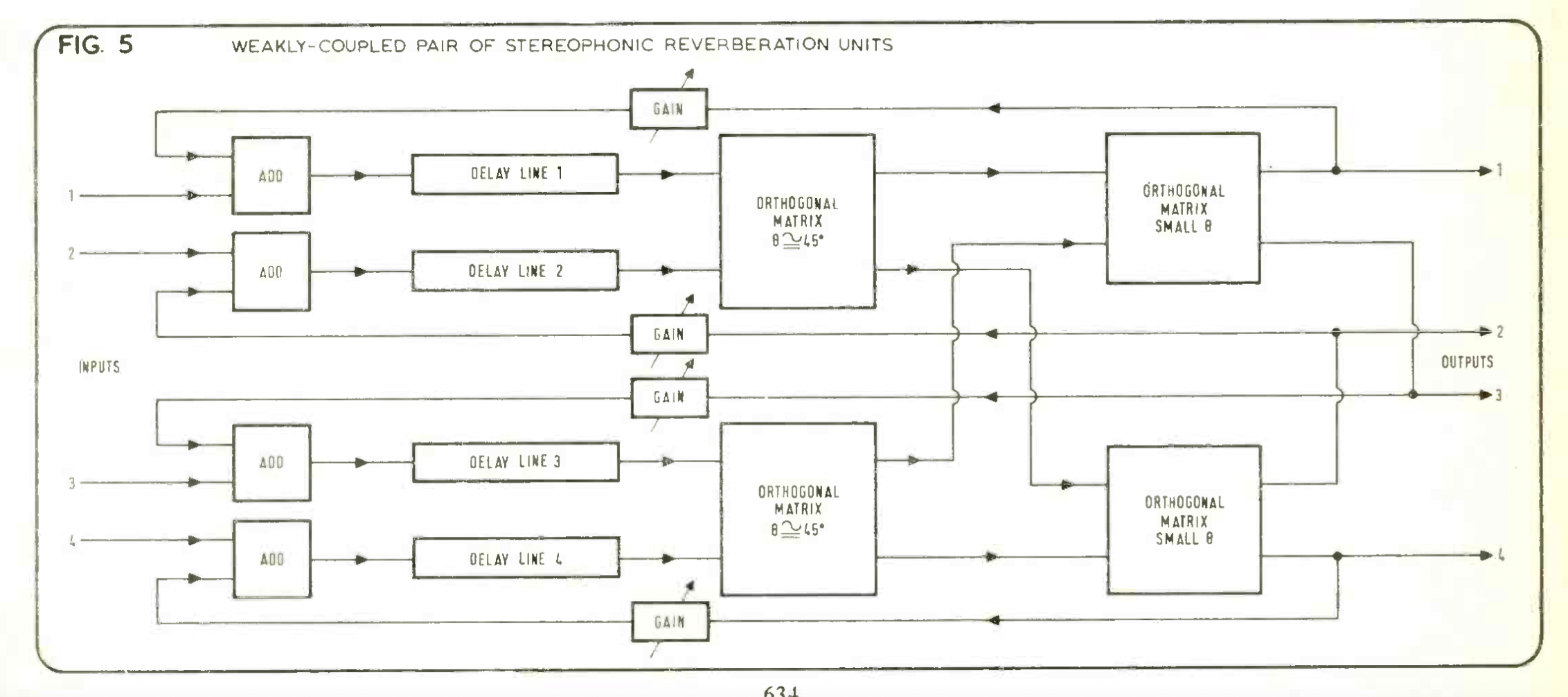Plate reverbs have some distinctive characteristics:
- Instant onset of reverberation
- Instantly high echo density
- Bass RT60 (reverberation decay time) that is considerably longer than the midrange
- Fairly short RT60 for the treble frequencies, no matter what the reverb decay setting is at
Interestingly enough, these characteristics are shared by reverberation chambers!
- A typical reverberation chamber is made out of brick, stone, concrete, or some other dense material (such as several layers of drywall).
- The walls are usually covered with several coats of plaster. This provides a highly reflective surface, which allows for the midrange to decay for several seconds.
- Studies from the late 1960s showed that the reverb time of a chamber would increase after a few years. This was attributed to the plaster becoming less absorbent as it dried out.
- The size of a reverberation chamber is usually fairly small, on the order of 1000 to 2000 cubic meters. This will result in a rapid onset of reverberation, as well as high echo density, since the sound just doesn’t have that far to go before it reflects off of other surfaces.
- There is a slight delay in the onset of reverberation, compared to a plate. This is probably due to the usual microphone/speaker configuration, where the speaker is aimed towards the nearest wall, and the microphone is aimed towards the opposite wall (the idea being to minimize how much of the direct signal from the speaker is captured by the microphone).
- The bass RT60 of a reverb chamber is dependent on the material used for the walls.
- Concrete reverb chambers often had a very long bass RT60, compared to the midrange.
- This would have been dealt with by EQ on the reverb send/return. At Abbey Road, for example, the reverb sends went through a bandpass filter, that cut out virtually all energy above 10 kHz and below 600 Hz.
There are a few significant differences between plates and reverb chambers.
- The dispersion in a plate will result in different stereo imaging than in a reverb chamber.
- In a plate reverb, the speed of sound at low frequencies is much slower than at high frequencies. This results in a significant time difference (~10 msec) in the onset of reverberation between the left and right channels for very low frequencies, transitioning to a fairly small time difference (~0.5 msec) for high frequencies between the left and right channels.
- A reverb chamber is full of air, which isn’t a dispersive medium. The time delay between the channels will be based on the time delay between the output of the speaker and the first reflection received by each microphone. There will be all sorts of phase complexity after a period of time (given how signals mix), but you won’t have the phase weirdness you find in a dispersive plate.
- A reverb chamber will have a higher modal density than a plate.
- The term “modal density” refers to the number of resonant modes (or resonances, or eigenmodes) that can be heard in the sound of a resonant object or space.
- A reverb can be viewed as a whole bunch of parallel resonators. Each of these resonators is like a little bell, that rings out when excited by the input being close enough to it in frequency.
- The more resonances here are, the smoother the reverb produced (as long as they are spaced together kinda randomly, but not too randomly).
- The larger the physical space, the more resonances there will be in the reverb.
- The resonance density of a chamber will increase with the square of frequency.
- This is the case for all 3D physical spaces.
- Plate reverbs have a roughly uniform resonance density with regards to frequency.
- Artificial reverbs based on delay lines usually have a roughly uniform resonance density with regards to frequency. This makes a plate model a reasonable goal for a digital reverb.
In an upcoming post, I will talk about how ValhallaPlate has been designed to not only emulate plate reverbs, but also some of the key characteristics of reverb chambers.






After testing the demo, I noticed it has a brickwall lowpass filter at 11 kHz. Is there any physical basis for this or is it just to keep the cpu usage low? (and remove excess highs as a bonus)
The latter. Most of the plates we tested didn’t have much going on above 11 kHz, and the dispersion modeling also ran more efficiently at the lower sampling rate. A few of the plates in the 1.5.0 update (Adamantium, Titanium, Osmium) are running at the full sampling rate, for more high frequency “air.”
Wouldn’t resonance density be a function of a room’s resonant frequencies and not, as you say, a square of the frequency?